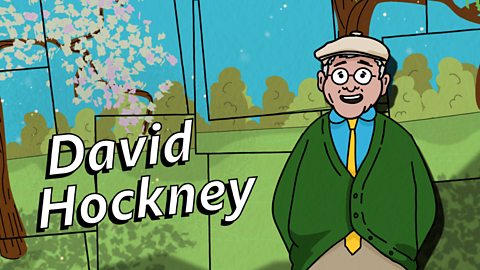Key facts about tertiary colours
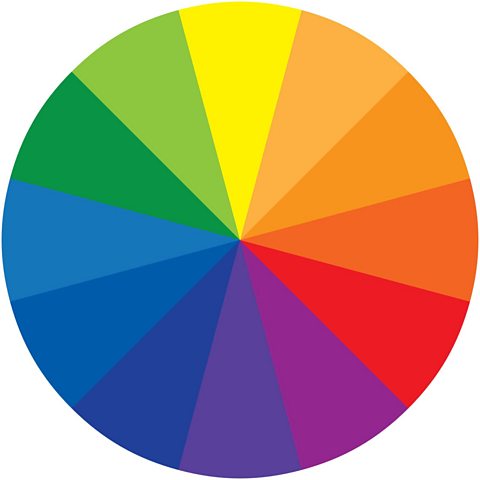
This image shows an example of a colour wheelA circle showing different groups of colours and how they relate to each other..
You might be able to spot the primary coloursRed, yellow and blue. These colours cannot be made by mixing any other colours together. and the secondary coloursGreen, orange and purple. These colours can be made mixing the primary colours together..
The tertiary colours in the colour wheel sit between a primary colour and a secondary colour. They are the six 'in-between' colours.
In the colour wheel, tertiary colours sit between the two colours that you can mix together to make them.

The six main tertiary colours
There are six main tertiary colours. Artists use what they know about colours to help them make their art.
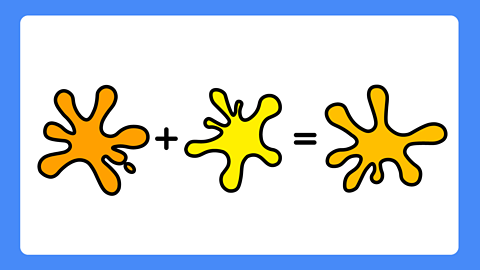
Image caption, Yellow and orange mix to make yellow-orange or amber
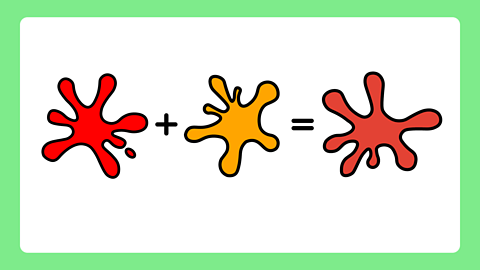
Image caption, Red and orange mix together to make red-orange or vermillion
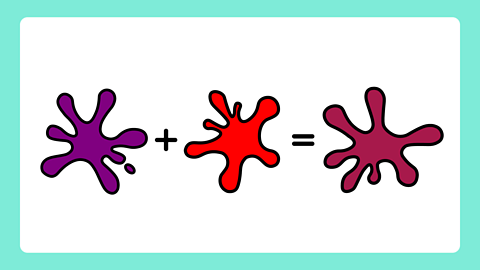
Image caption, Purple and red make red-violet or magenta

Image caption, Blue and purple mix to make blue-violet
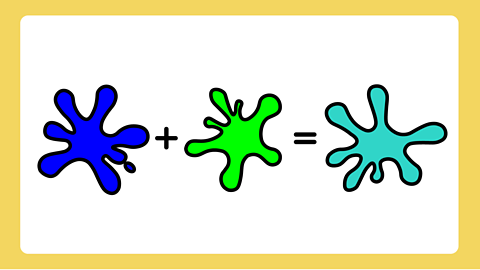
Image caption, Blue and green mix to make blue-green or turquoise
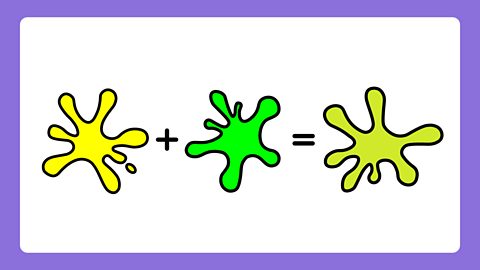
Image caption, Yellow and green makes yellow-green or spring green
1 of 6
Who was Hilma af Klint?
The painter Hilma af Klint was born in 1862 in Stockholm, Sweden and died in 1944. Hilma used many primary, secondary and tertiary colours in her work.
She is said to be one of the first abstractArt that doesn't represent reality, but uses shapes, colours and textures for effect. painters.
Find out about the life and work of Hilma af Klint
Narrator: Hilma af Klint was born in Sweden, in 1862.
She was one of the first women to study at the Royal Academy of Fine Arts in Stockholm.
From a young age she was interested in science and religion.
Hilma wanted to learn more so she formed a group called The Five.
The Five looked at ways to create art that was inspired by spiritual ideas, as well as science.
They thought it was possible to paint things that they believed in.
Not just objects, people, or places we can see.
Hilma was one of the first people to produce abstract paintings.
Throughout her life Hilma created hundreds of paintings.
She used a wide variety of colours and featured spirals and religious symbols in her work.
Because af Klint's work was very different to other artists at the time it wasn't until the 1980s thatpeople realised how important it was.
Hilma af Klint's paintings
Hilma af Klint's work uses bold colours and geometric shapes. She also used shades and tints of colours - lighter and darker tones.
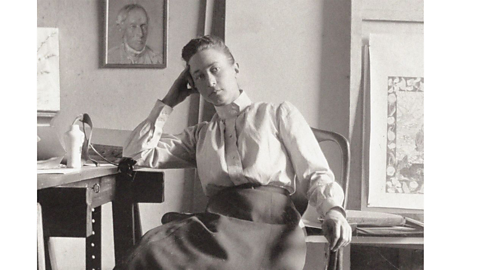
Image caption, Hilma Af Klint in her studio in 1895. She was one of the first women to study at the Royal Academy of Fine Arts in Stockholm.
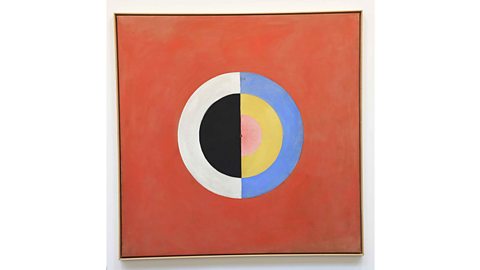
Image caption, Hilma Af Klint chose to use very few colours in this painting called The Swan No.17 from 1914-15
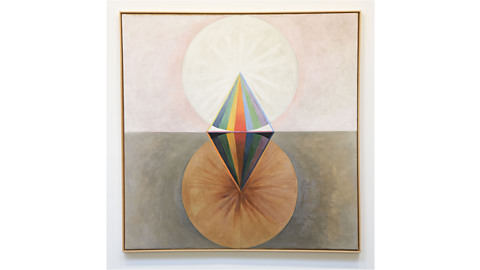
Image caption, This artwork from the series is called The Swan No.12. It shows Hilma Af Klint's use of primary, secondary and tertiary colours in her work.
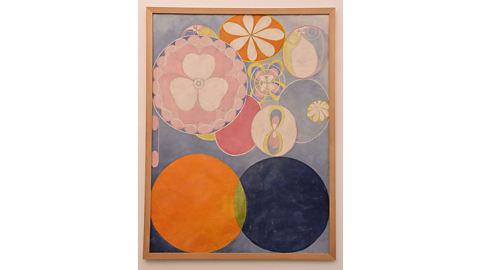
Image caption, This artwork is called No.2 Childhood. It was part of Hilma af Klint's series called The Ten Largest from 1907
1 of 4
Hilma af Klint factfile
Watch: learn about mixing tertiary colours to use in your paintings
Laura Hopkinson: Here's a colourful topic to explore, tertiary colours!
Tertiary colours are made by mixing primary colours and secondary colours together. Let's have a go.
You will need paper, primary colour paints, paintbrushes, a palette, old plate or something to mix on.
To start with I mix my primary colours to create secondary colours. Red and yellow make orange. Red and blue make purple. Yellow and blue make green.
The third set of colours the tertiary colours are made when we mix primary and secondary colours together.
There are six main tertiary tertiary colours.
You might look at a colour wheel like this. The tertiary colours are in between the primary and secondary colours.
Let's have a go at mixing them for ourselves. Mixing orange and yellow we get this lovely yellow-orange colour!
Now how about mixing purple and red, that's called red-purple. When we mix green and blue it makes a beautiful ocean colour, you might call this turquoise.
The other three are red-orange, blue-purple and yellow-green.
Have a go at mixing them for yourself. Then you can enjoy using all the tertiary colours in your paintings.
Activity
Did you know?
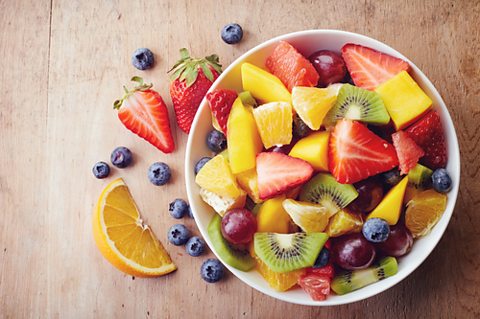
- The scientist Sir Isaac Newton created the first colour wheel in 1704.
- Primary, secondary and tertiary colours can all be found in nature. Just look at this bowl of fruit!

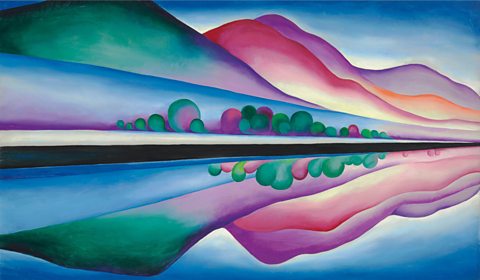
- Many other painters use tertiary colours in their work, for example Georgia O'Keefe in this painting of the New Mexico landscape in the southern USA.
Quiz
Play Art Gallery Rescue. gamePlay Art Gallery Rescue
Help Lily and Will rescue the art gallery!

SATs preparation resources. activitySATs preparation resources
Get ready for the SATs papers with videos, activities, quizzes and games to refresh your knowledge and practise your skills.

More on Painting
Find out more by working through a topic
- count2 of 7

- count3 of 7
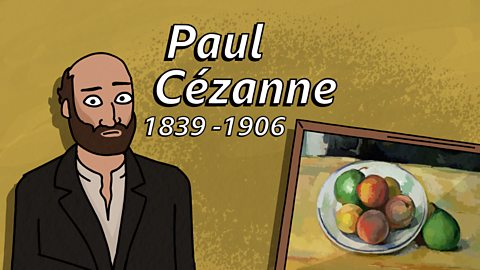
- count4 of 7
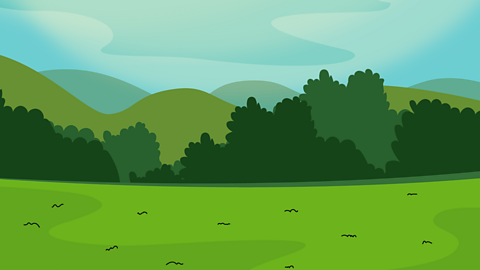
- count5 of 7
